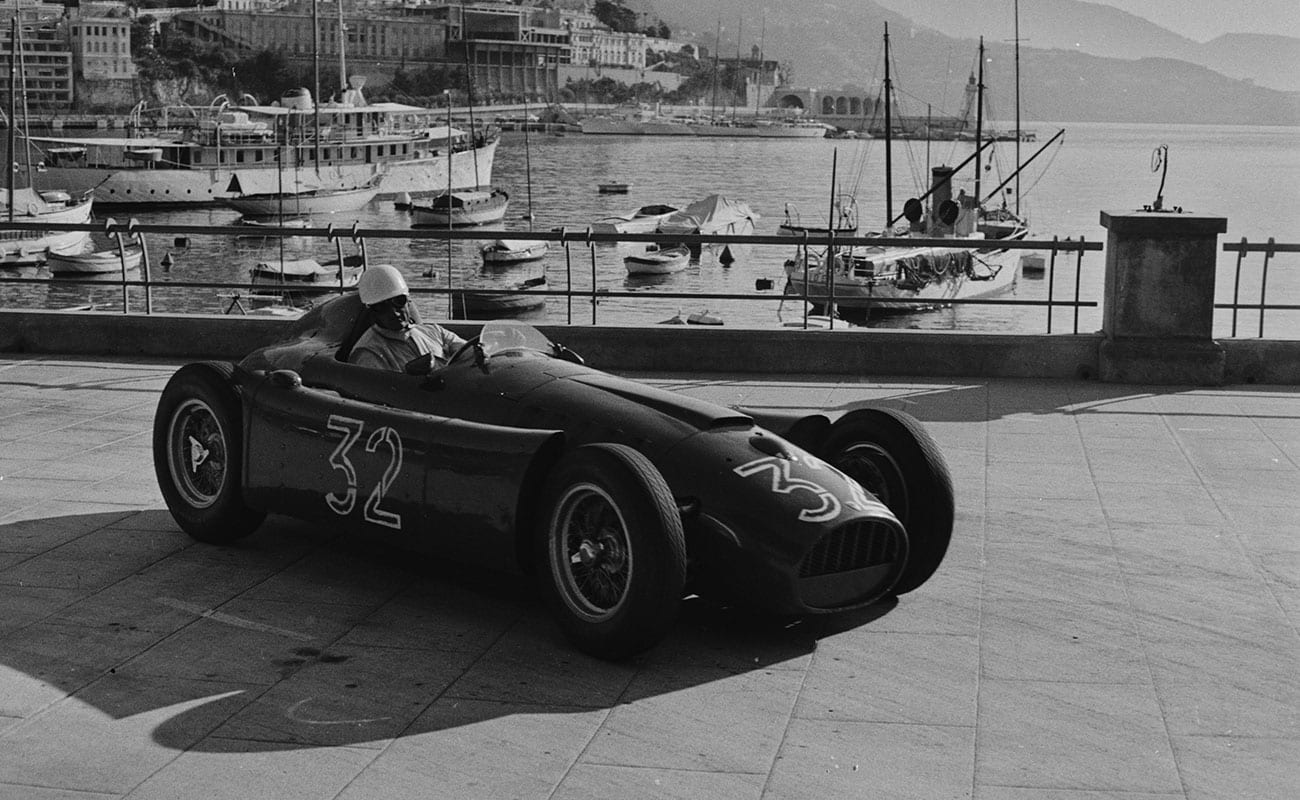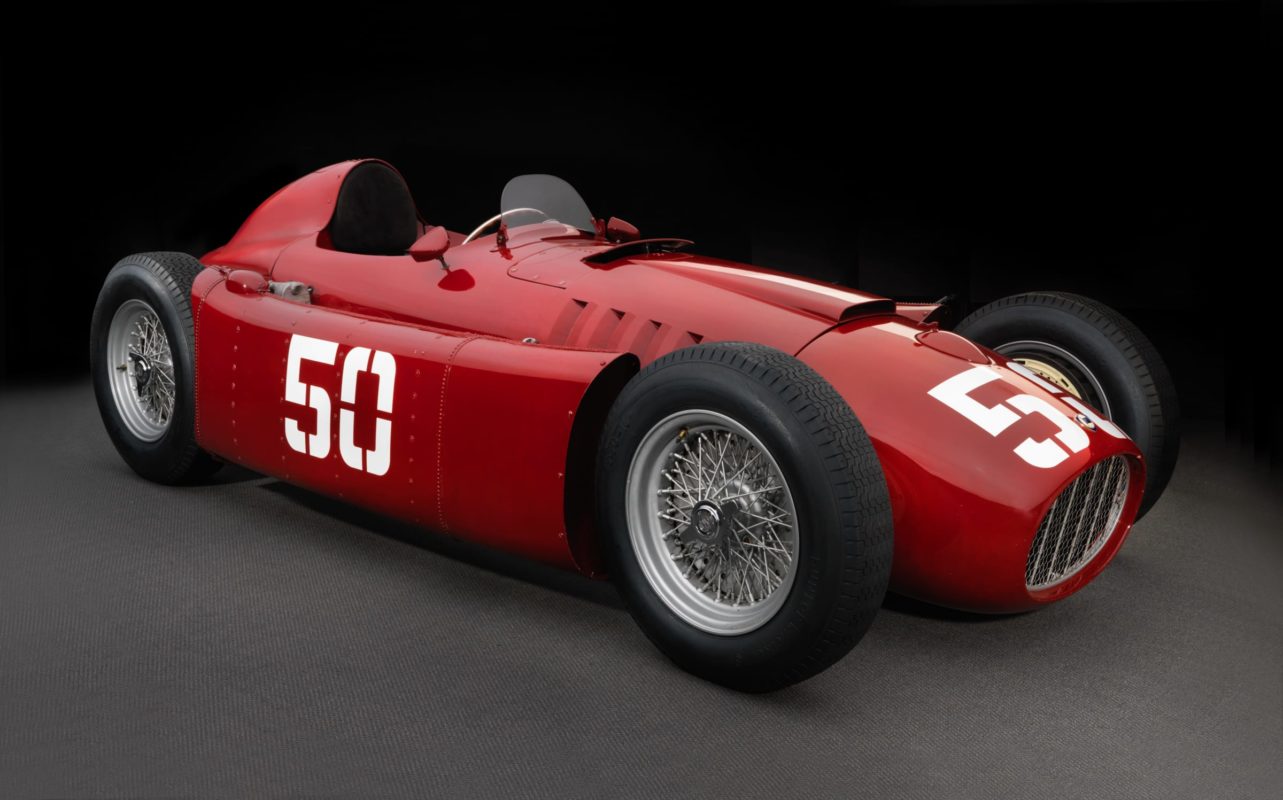Tech Specs
Eight –cylinder, 90⁰ vee engine, double overhead camshafts 2479 cc, 250 hp at 8200 rpm.
Before/After
1955 Lancia


About the 1955 Lancia D50 Formula 1
This model Lancia was the only opposition feared by the otherwise peerless Mercedes-Benz factory racing team in the World Championship Grand Prix of 1954-1955.
Note its beautifully compact packaging, most notably its outrigged pannier tanks concentrating the fuel load within the wheelbase instead of outboard at the tail as in conventional designs. Note also its 2 ½ liter 4-cam V8 cylinder engine, its rear-mounted transaxle gearbox, its low-as-possible seating position and its exquisite workmanship.
These works team Lancias in period were beautifully made, expense no object. Every suspension and ancillary mounting point on the D50’s lightweight multi-tubular chassis was precision-machined to aeronautical tolerances. Everything about these cars breathed quality. And quality cost so much this program helped bankrupt Lancia. Design concept was master-minded by the legendary Ing. Vittorio Jano – creator of the pre-war Alfa Romeo 8C-2300/2900 models seen elsewhere in this Collection.
Twice World Champion driver Alberto Ascari qualified his D50 on pole for Lancia’s Formula 1 debut race, the 1954 Spanish Grand Prix. He then won the 1955 non-Championship GPs at both Turin and Naples and led the Pau GP in works D50s, only to crash into the harbor just after taking the lead in that year’s major league Monaco Grand Prix.
Lancia’s financial woes then engulfed the company and its racing aspirations. Eugenio Castellotti shone in one car – run as a private entry in the Belgian Grand Prix, before the entire Lancia armory of D50 cars and spares was presented to Ferrari for further racing and development.
In 1956 Juan Manuel Fangio won the Formula 1 World titles in the D50A model Lancia-Ferrari V8s derived from this design. Only two original D50s have survived. The car you see here was lovingly assembled by ex-Lancia Corse engineers and veteran team mechanics, combining a remade chassis and body with preserved original V8 engine, transaxle and other period components. It is a hugely impressive monument to the genius of Vittorio Jano, the genuine but destructive racing enthusiasm of Gianni Lancia and his mother Adele, and of the only 1950s racing team feared by the might of Mercedes-Benz.
Photos – Peter Harholdt


















